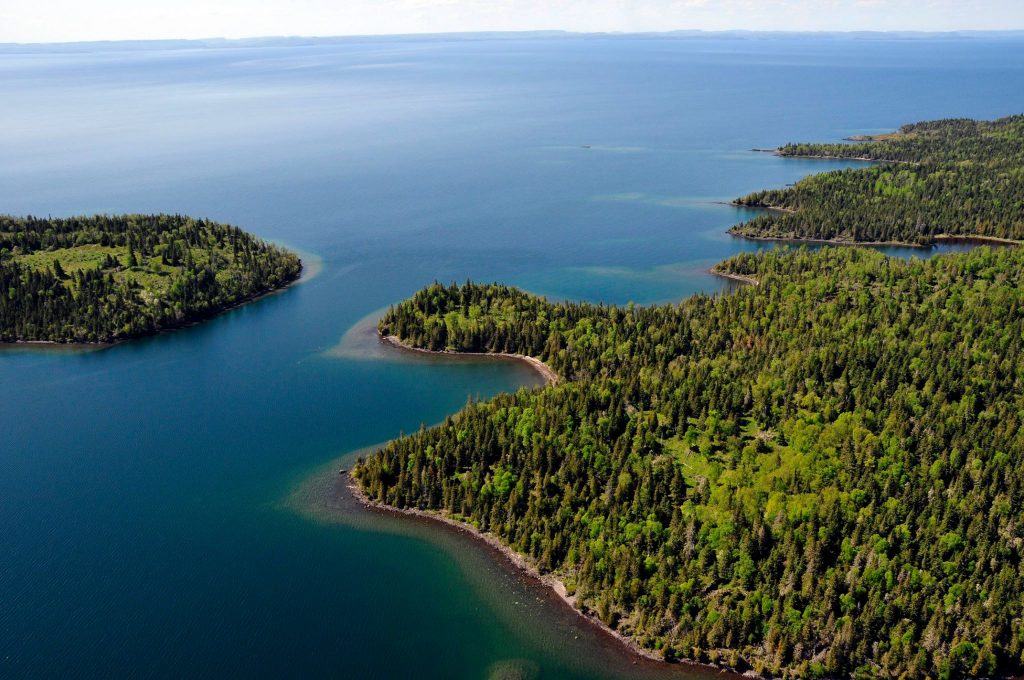
The National Park Service is seeking public comments on its proposal to bring 20-30 wolves to Isle Royale National Park, seeking to restore the population after being nearly extirpated in recent years.
Wolves first found their way to the 200-square mile island in modern times in the 1940s, by crossing an ice bridge from Canada. A noted study of predator-prey relationships began in 1958, with scientists still tracking moose and wolf populations and interactions today. As the only predator of the moose on Isle Royale, wolves have an out-sized impact on everything down to what trees and other plants grow there.
The average wolf population on Isle Royale has been 22 animals over time, hitting 50 in 1980 before crashing due to illness, and never reaching strong numbers since. By 2015, only three wolves remained. Now, it’s believed there are only two, with little chance of reproduction unless more wander over during the increasingly-rare winter when Lake Superior freezes over sufficiently.
If the wolves do die out, moose populations might climb even higher. Biologists believe that moose’s preferred diet would dictate big changes in the types of forest found on the island. Moose prefer to eat saplings of birch, aspen, sugar maple, balsam fir, and white cedar. They also like uncommon trees like mountain ash, red oak, red maple, and white pine.
“Absent wolves, possible changes associated with the current levels of moose herbivory include the decline of balsam firs on the west end of Isle Royale, and the potential for more savannah-like spruce-dominated forests,” the Draft Environmental Impact Statement reads.
The agency uses this concern to justify a plan to slowly add up to 30 wolves. They also present the possibility of a smaller re-introduction with possible further additions in the future. A final alternative would be to wait to introduce wolves until the moose population reached higher numbers.
To re-introduce wolves, the Park Service would capture them from similar habitat in the Lake Superior region. They would particularly seek animals that have a history of preying on moose, to improve the odds they adapt to the primary prey on Isle Royale. The wolves would be checked by veterinarians and transported to the island, where they would be released without delay, seeking to reduce the chance of injury, illness, or acclimation to humans and cages.
But, the island and the 450 smaller islands surrounding it are federally-designated wilderness. Meddling in the ecology of a place that is supposed to be unaffected by humans raises ethical and legal dilemmas.
Montana-based Wilderness Watch, spearheaded by Minnesota conservationist Kevin Proescholdt, opposes any attempt to bring wolves to Isle Royale.
“Wilderness Watch works to protect wolves in Wildernesses across the country, including going to federal court several times to protect them from trapping, shooting, and other forms of harassment,” the organization writes. “We believe that in Wilderness natural processes, not human demands, should determine whether predators stay or go.”
Complicating matters, the disappearance of wolves on Isle Royale may be related to human activities: namely the use of fossil fuels and the subsequent global warming that is occurring. It has reduced the frequency of a frozen Lake Superior, and the possibility of wolves either wandering over from the mainland to rebuild the population, or a female from the island going to the mainland and returning pregnant.
The average surface water temperature of Lake Superior increased by 4.5° F between 1979 and 2006, to 68° F, according to Lake Superior magazine. It continues to increase. This year, it matched the 2010 record of 68.5°. A study by the National Park Service and others published last year found that the chances of ice bridges forming have declined significantly in the past several decades, due to climate change. Rolf Peterson, one of the longtime lead wolf researchers on Isle Royale, says Superior’s ice is decreasing by 0.5 percent each year, and he expects it will have no significant ice cover by 2040.
Read the full Draft Environmental Impact Statement here. Public comments will be accepted until March 15, 2017. Hearings will be also be held in February, although dates and locations have not yet been announced. Submit comments here.

